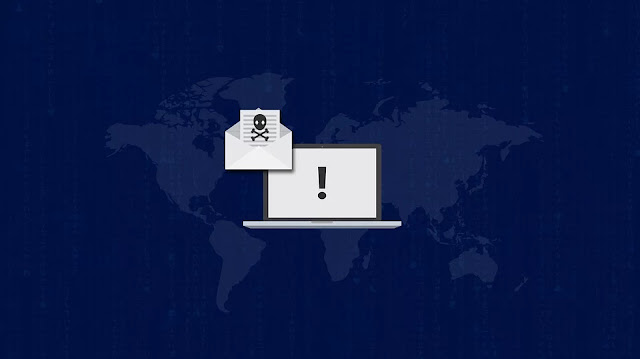The North Korean Lazarus Group, which was employed by the North Korean government to target medical research and energy organizations with cyberattack campaigns, was reported by security researchers on February 2.
The campaign was discovered by threat intelligence analysts at WithSecure. They were trying to unravel a ransomware attack that they suspected had been launched against one of their customers. In the course of their investigation, they discovered evidence indicating that the Lazarus crew had committed an OpSec oversight that led to a key operational security (OpSec) slip-up, which provided them with proof that the event was part of a wider state-sponsored intelligence gathering campaign already being carried out by North Korea.
Sami Ruohonen, the senior threat intelligence researcher for WithSecure, says his initial suspicion was that it was an attempted BianLian ransomware attack.
Even though WithSecure had collected evidence in one direction, it quickly pointed in a different direction. Throughout the process of gathering more information, they became more and more confident that the attack had been perpetrated by a group associated with the North Korean government. Having discovered this, WithSecure concluded that it was indeed the Lazarus Group that had posed as the attack.
The Path to Cyberespionage Begins With Ransomware
It was the initial compromise and privilege escalation of the system that led them to the conclusion that they were engaged in this activity. In August, the Zimbra mail server was exploited using a known vulnerability that existed in an unpatched version of Zimbra. In one week, the threat actors had already accessed many gigabytes of data from the mailboxes on the server. The attacker used live-off-the-land (LotL) strategies along the way as he moved horizontally across the network by the end of October. The compromised assets began becoming connected to Cobalt Strike's command-and-control (C2) infrastructure in November, beginning the process of infiltrating almost 100GB of data from the network during the period between November and December.
It is believed that the researchers dubbed this incident "No Pineapple" because it referred to an error message that was used in a backdoor that was used by the bad guys that replied > No Pineapple! > When the data size exceeds the segmented byte size, the operation fails.
Based on the malware, the TTP, and a couple of unique findings, the researchers feel that there is a high degree of confidence in their identification of Lazarus group activity. Data exfiltration involves several key actions, one of which is critical. Several suspicious web pages appeared to be connected to a North Korean IP address for a short time, as a result of an attacker-controlled Web shell.
Even though the country only has fewer than a thousand of these addresses, at first the researchers wondered if they had made a mistake. However, they later confirmed that they had not.
The attacker showed exemplary tradecraft and still managed to carry out considered actions on carefully selected endpoints despite this OpSec failure, Tim West, head of WithSecure’s threat intelligence unit, commented on the actor’s performance.
Upon digging deeper into the incident, the researchers discovered that additional victims were also identified as a result of the attack as the investigation proceeded. The victims were identified based on their connections to a C2 server that was controlled by threat actors during the attack. There are many espionage motives involved in this process, which points to a much larger effort than was first suspected as being the target.
Among the hundreds of victims, several companies in the healthcare sector suffered losses including a company that researches healthcare. In addition, a company that manufactures technology utilized in the energy, defense, research, and healthcare sectors.
During the third quarter of 2022, most of the breaches that have been reported occurred because of the infrastructure that researchers noticed in May. According to the victimology of the campaign, analysts consider the threat actor to have intentionally targeted the supply chain of the industry verticals of medical research and energy. This is based on the victimology of the campaign.
Lazarus Never Remained Down for Long
It is widely believed that the Foreign Intelligence and Reconnaissance Bureau of North Korea is responsible for the long-running Lazarus threat group that has been operating for over a decade. Researchers have confirmed that the group has been involved in hacking activities at least as far back as 2009. It has been responsible for an increasing number of attacks since then. It has only been a matter of short intervals where the man has been thrown to the ground between periods of standing.
This anti-terrorist operation serves both a financial purpose - it is an extremely valuable source of revenue for the regime - as well as a spying purpose. As early as 2022, there were many reports of Lazarus providing sophisticated attacks against Apple of their M1 chip as well as fake job posting scams using Apple's M1. It should be noted that a similar attack took place last April. Computers were used to upload malicious files, disguised as job offers for highly attractive dream jobs, to targets in the chemical sector and information technology.
As of last week, the FBI confirmed that the Lazarus Group, a group of cyber threat actors from the United States, was implicated in the theft of $100 million worth of virtual currency last June from the cross-chain technology created by Harmony to exchange data across blockchains, termed Horizon Bridge, owned by the blockchain company Harmony. According to estimates provided by the FBI, because of the actions of the group in the Horizon Bridge heist, the group was able to launder more than $60 million worth of Ethereum by using the Railgun privacy protocol in January. There has been a report that authorities were able to freeze "some of these funds."


























